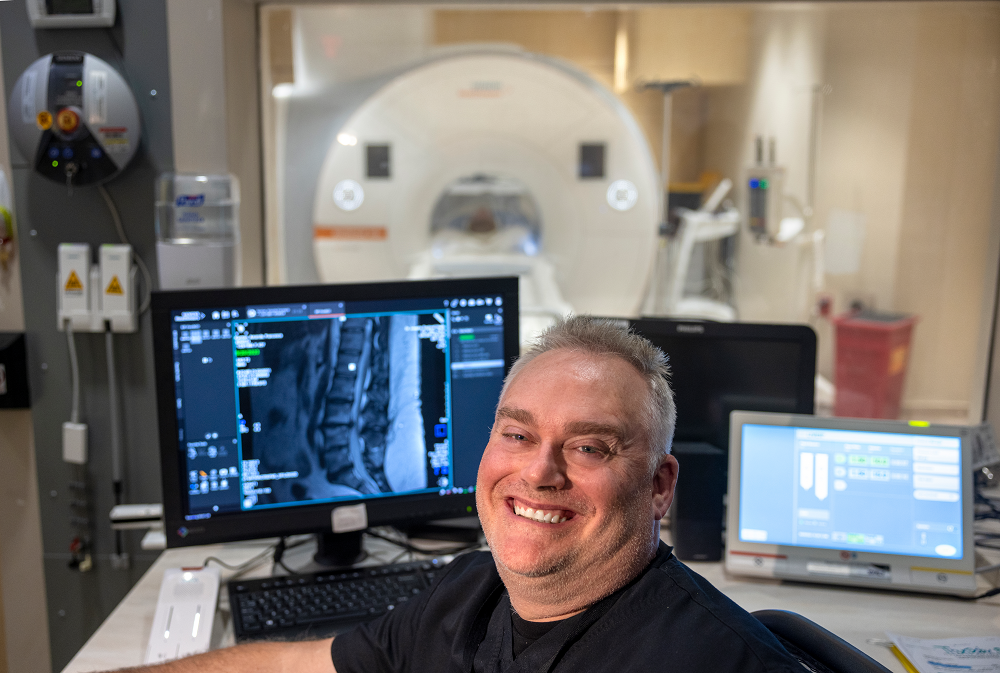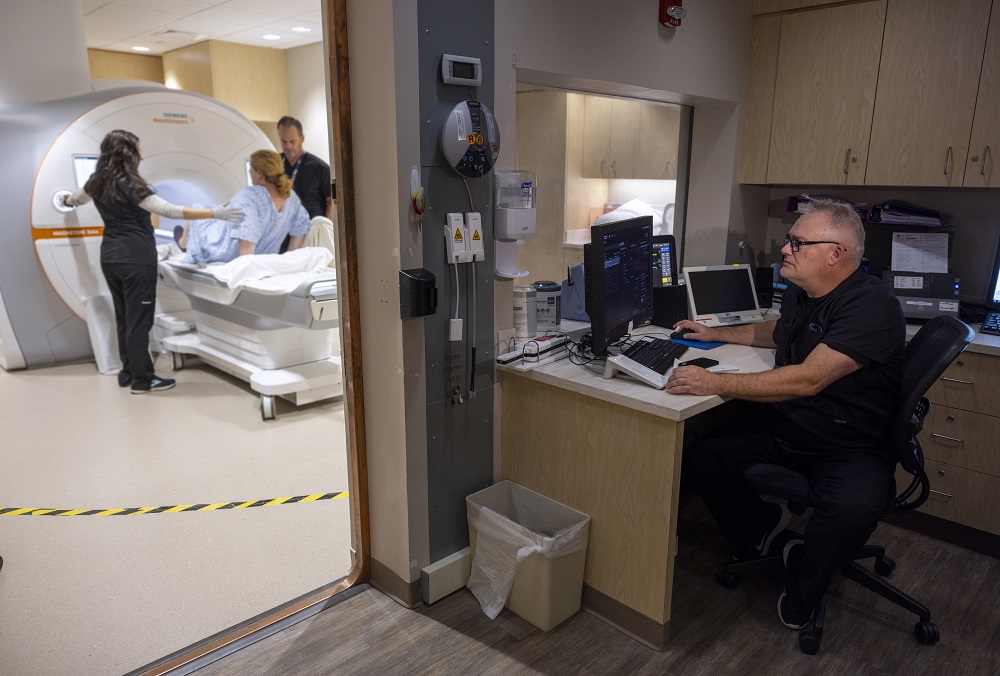Balancing act: How chief MRI technologist helps team find work-life harmony

With 32 years of experience in health imaging, Fred Gajewski has had a fulfilling—and busy—career. His work has taken him across the U.S. and the world, from Oregon to Massachusetts, California and England. Most recently, his career brought him to Penn State Health St. Joseph Medical Center where he has been sharing his expertise as chief MRI technologist and finally enjoying balance between his work life and personal life.
When he graduated from high school, Gajewski wasn’t sure what path to choose. He saw family and friends pursue careers in health care, and he felt drawn to medical imaging. “Imaging involves helping people by diagnosing their health issues while using leading-edge technology,” he said. “It was a natural fit for me.”
Gajewski enrolled in the radiologist technologist program at the Reading Hospital School of Health Sciences. After completing his certification, he took a job as an X-ray technologist at the hospital, where he later continued his training in MRI. In 2000, he was promoted to a managerial role and has been a leader ever since.
A struggle with work-life balance
Prior to joining the imaging team at St. Joseph Medical Center, Gajewski directed a network of outpatient imaging centers at a health system in New Jersey. What started as just two imaging centers he helped grow to nine. Collaborating with hospital leadership, he oversaw every center, implementing growth strategies and new technology to lead the network into success.
While Gajewski said this experience was incredibly rewarding, the work began impacting his personal life. “I spent many hours driving between the imaging centers in New Jersey and putting in extra hours to make sure everything ran smoothly, while also traveling extensively for work I did as a consultant,” said Gajewski. “I needed a change.” Eventually, he took a new position at a medical center in Wynnewood, Pa., but he still felt burdened with administrative and clinical work and didn’t have the right work-life balance.
Though Gajewski wasn’t actively looking, he was ready for a new opportunity. Fortunately, he got a call from a Penn State Health recruiter and immediately hit it off with the team at St. Joseph Medical Center during his first visit.
Empowering a team to deliver better care
Since joining Penn State Health in February 2023, Gajewski has been managing a smaller department than his previous roles, which has helped him find more harmony between his work and home life. He is trying to promote the same for his employees by implementing initiatives that simplify operations and offering scheduling flexibility.
One of Gajewski’s new initiatives was to introduce a safely protocol for patients with implanted medical devices due to the risk posed by the powerful magnets in MRI machines. Initially, patients are asked during scheduling whether they have an implant. That information is then entered into their electronic medical record. When they arrive for their MRI, patients also fill out a screening form. The MRI technologists ask about any implants and other relevant MRI screening questions. They also conduct a thorough safety check before the MRI using a handheld MRI screening metal detector and visual inspection. This process is repeated if the patient comes back for a future MRI, ensuring ongoing patient safety.
Elizabeth Robb, an MRI technologist who came to St. Joseph Medical Center from a Level I trauma center, says the changes are elevating the imaging center to a comparable level of care. “Fred has brought a lot of valuable experience from other hospitals, and he’s using it to align with the goals Penn State Health is working to achieve.”
Robb also appreciates the teamwork that has grown thanks to Gajewski’s leadership. “I love the flexibility we have here,” Robb said. “We all try to help each other as much as we can, even if it means adjusting our hours so someone can leave early for an appointment.”
Rewards beyond measure
Gajewski said he is happy that the opportunity to work at Penn State Health came when it did. At this stage in his career, he has begun planning for the future. Traveling less means he can spend more time with his family, which was a big part of his decision to join the team. He also appreciates the generous 401(k) match that Penn State Health contributes toward his retirement as part of its Total Rewards program.
This latest step in Gajewski’s lengthy career has been a positive one overall, he said. “The culture is very friendly here, and I appreciate the support I get from the managerial team and physicians. This is truly a unique, comfortable work environment in a challenging health care world.”

Fred Gajewski, right, performs an MRI scan on patient Amanda Katner, left, preparing to enter the MRI scanner.
The MRI teams are just one part of Penn State Health’s growing radiology and imaging departments. Find out more here:
If you're having trouble accessing this content, or would like it in another format, please email Penn State Health Marketing & Communications.
